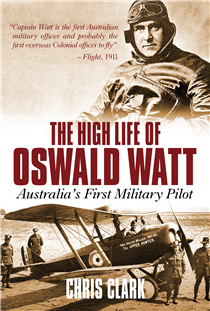Watt only became a pilot in 1911 and died after an unfortunate accident in 1921. Thus, his flying encompasses only a decade and his military flying even less. He wrote several articles before the Great War regarding Military Aviation and where Australia should be going with this new technology. Learning to fly at his own expense in 1911, at the outbreak of war volunteered his services and his personal aeroplane to the French Air Service.
In 1916, as Australia started to form a Flying Corps of its own, Watt pulled strings to be allowed to transfer to Australian service where officers of his rank were forbidden to fly beyond the front line. As such, he rarely came to public attention for his wartime service at the front. Towards the end of the war he was posted to command the training establishment of the Australian Flying Corps (AFC) in the UK.
His brief post-war service does paint him as a mover and shaker in aviation circles. He declined to continue serving in the AFC, which some reports state was due to other wartime officers being preferred for promotion ahead of him, or the pay was far too low for someone of his standing. His bequest of money for the Oswald Watt Gold Medal in recognition of services to aviation would appear to be his only legacy.
The author has endeavoured to paint Watt as a visionary and key member of Australia’s flying history. On the evidence presented, it is stretching a rather long bow. The author admits the claim on the front cover that Watt was Australia’s first military pilot is misleading. He was not a serving member of the defence forces in any capacity when he gained his licence.
Watt and his wealthy Sydney-based family and was apparently highly regarded as part of Sydney society. It is tempting to look at this book of 268 pages and note that the first 118 pages cover in excruciating detail the social life of the Watts, and one may presume the author felt having only about 150 pages was too short for publication. The reader certainly gets the impression Oswald Watt was a society member, perhaps to the detriment of his actual military and aviation attributes. 12
Reviewed for RUSIV by Bob Hart, November 2016

Paperback 352pp RRP: $29.99
Contact Royal United Services Institute about this article.






